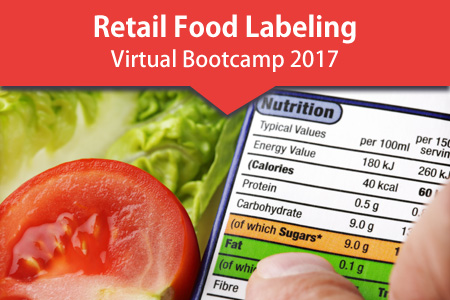The U.S. Food and Drug Administration (FDA) introduced the new food labels on May 20, 2016 to include more details on sugar, Vitamin D and Potassium content. This will also change the way the ingredients are displayed on the label, including changes in the used text’s font and size. The idea behind this change is to let people know the content of sugar, salt, fat, iron, calcium and more in what they eat, and not how or what they should eat. Most food manufacturers will have to comply with the new labeling rules by July 26, 2018. Those who make less than $10 million in annual food sales will get another year to become compliant with the new food label changes.
Besides the major label changes, the FDA will also introduce a few minor changes to the Supplement Facts label for making it appear consistent with the Nutrition Facts label.
The new Nutrition Facts Label will have the following details:
- A modified design for highlighting “calories” and “servings”, which are the two vital components that help people make informed food choices
- Serving sizes now to be based on what people actually eat, rather than how and what they can eat (or drink).
- A declaration stating the grams and percent daily value (%DV) of “added sugars”, which can help customers determine how much sugar content they are consuming per serving.
- “Dual column” labels for indicating “per serving” and “per package” information regarding calories and nutrition content for certain food products that can be consumed in one go or multiple settings.
- “Dual column” labels to indicate both “per serving” and “per package” calorie and nutrition information for certain multi-serving food products that could be consumed in one sitting or multiple sittings.
- For packages between one and two servings, like a 20-ounce soda, the content of calories and other vital nutrients will need to be labeled as one serving, since people will usually consume it in one go.
- Updated daily values for certain nutrients like sodium, dietary fiber, Vitamin D, or more, while staying compliant with 2015-2020 Dietary Guidelines for Americans and Institute of Medicine sanctions.
- Declaration of values for Vitamin D and Potassium, comprising of the details like actual gram content, %DV, and more. The %DV for iron and calcium will continue to be mentioned as before, while there’s won’t be further need to mention details for Vitamins A and C, though these nutrients can be added again on a voluntary basis.
- “Calories from Fat” will no longer be mentioned, because the researches have shown the type of fat holds more prominence than the amount. Values for “Total Fat,” “Saturated Fat,” and “Trans Fat” will be mentioned in the label just as before.
- An abbreviated footnote explaining the %DV will also be there on every label.
For more on new food labeling regulations and ensuring compliance and successful retail of your products, join our Virtual Boot Camp, titled “Retail Labeling – Everything you wanted to know” on Wednesday, February 15, 2017. Register today to expand your knowledge base on critical FDA changes like FDA package elements, food service requirements, allergen labeling, nutritional regulations, and more.


